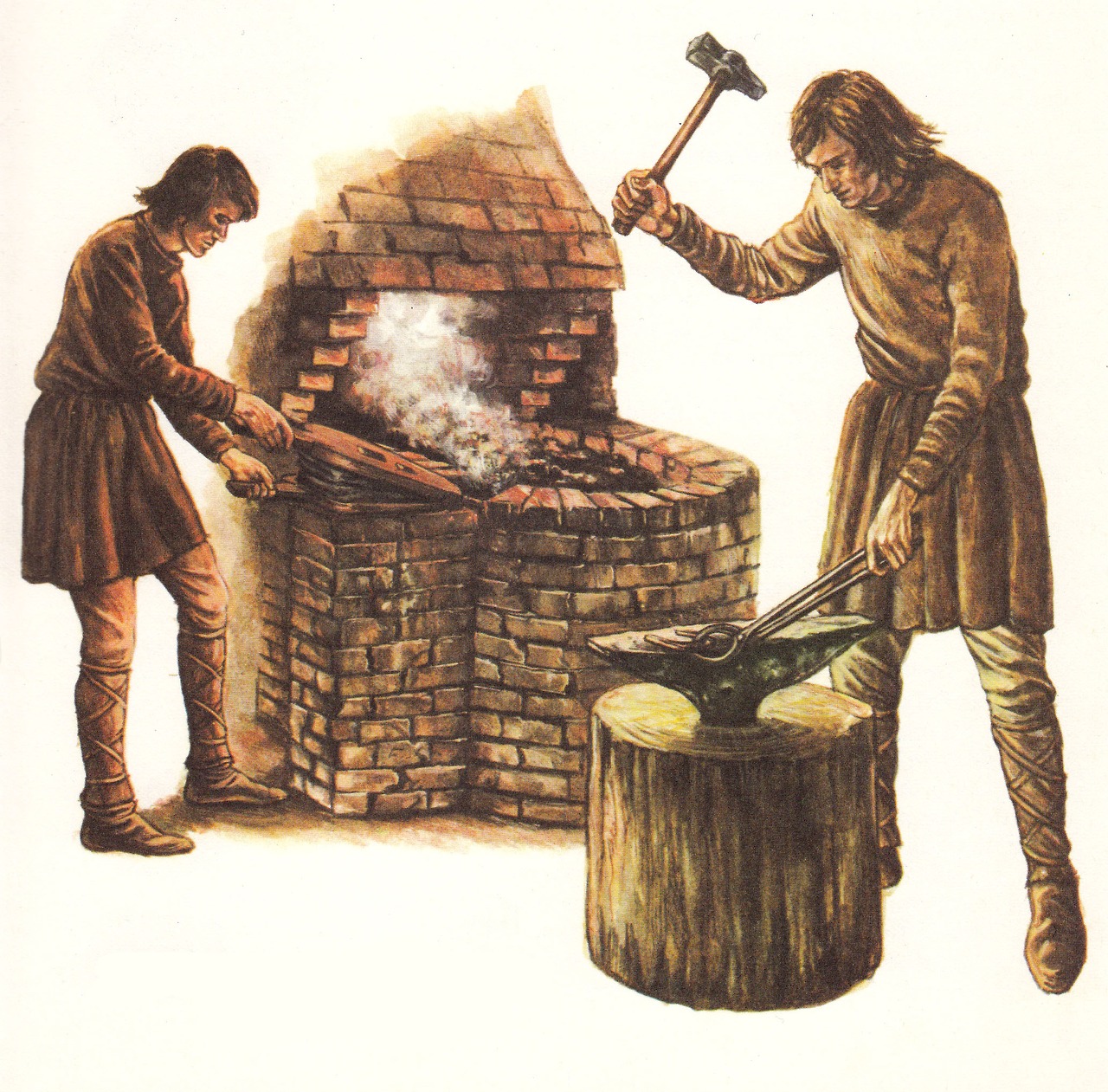|
Life in Anglo-Saxon England Part 3: Work, Food, and ClothingWork Crops at this time included grains such as barley, oats, rye, and wheat and vegetables such as cabbage, carrots, celery, parsnips, and peas. Fruits grown at this time included apples, cherries, and plums. Farmers also grew beans and lentils. Some farmers divided their fields into three large parts, keeping one part fallow, or empty, while planting in the other two parts. This revived the soil in the fallow part, making it ready for fresh planting the following season. Farmers rotated the fallow assignment through the three parts. Oxen helped the farmers plow the fields. Some farmers shared labor and crops across farms. Animals kept included cattle, goats, pigs, and sheep. Farmers used their animals for meat and, in the case of some cattle, dairy products.
Farming was by no means the only craft practiced in Anglo-Saxon England. Some men were blacksmiths, forging weapons and tools and household items out of iron and other metals. Some men were potters, making vessels and containers out of clay and other materials, in early days by hand and then later by using a potter's wheel. Other men made leather goods. Still others made jewelry. Food Anglo-Saxon bakers used grains to make bread and also to brew ale and beer. Another common drink at this time was mead, an alcoholic drink sweetened with honey. Many villages had bee colonies, and the villagers gathered the honey to use as a sweetener (in the absence of sugar). River water was often polluted, so villagers usually drank barley-weakened beer. (The rich, of course, could afford wine and so drank that.) Cooking was on open fires or in homemade pots, pans, and cauldrons. Bowls and cutlery were made of wood. (With very few exceptions, cutlery included only knives and spoons; forks did not arrive until long after the Norman Conquest.) Many people piled vegetables or meat on bits of bread and ate it all with their hands; cooks used mortar and pestle to grind other foods to make them easier to eat. Clothing Richer people wore richer clothing, such as robes or dresses, and jewelry such as brooches and rings. Some people wore clothing made from animal skins. Part 4: Laws and Fighting |
|

 The entire family helped work the farm. Children helped dogs herd cattle and sheep. Women helped pick crops or milk cows and then prepared and served food.
The entire family helped work the farm. Children helped dogs herd cattle and sheep. Women helped pick crops or milk cows and then prepared and served food.
